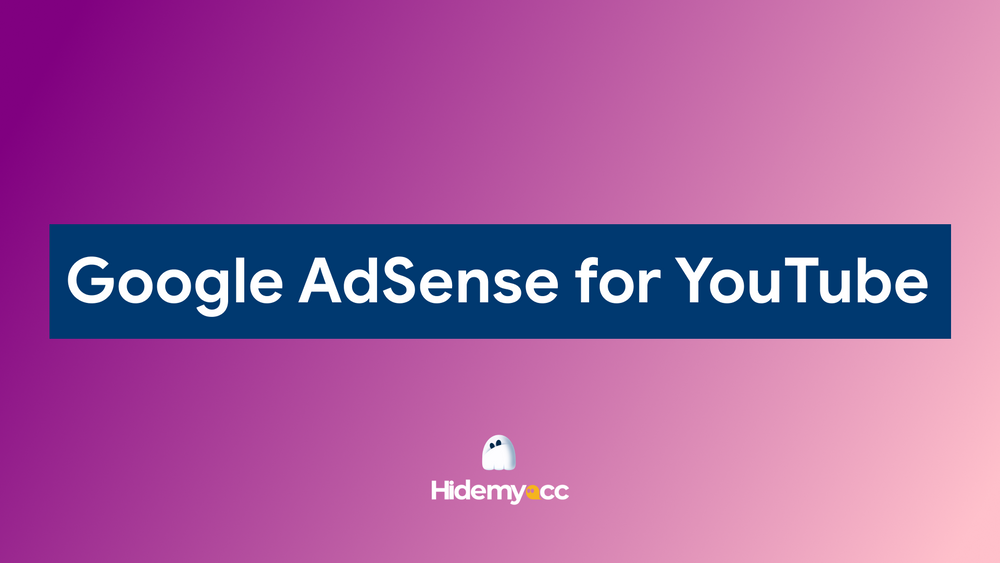LinkedIn is more than a digital resume. It’s a search engine for professionals, a content platform, and a place where high-intent conversations turn into real opportunities. If you want more visibility, stronger personal branding, and a steady pipeline of clients or career leads, learning how to get followers on LinkedIn is a smart move.
The platform rewards valuable content, authentic relationships, and consistent activity. In this guide, you’ll learn a practical, step-by-step system to increase followers on LinkedIn, starting with profile optimization, then moving into content creation, consistency, engagement, and analytics. Use it as a playbook you can implement today.
1. How to get followers on LinkedIn by optimizing your profile
Optimizing your profile not only makes it look more professional but also helps you reach more followers. Below are the steps to effectively optimize your LinkedIn profile.
1.1. Activate creator mode
Creator mode turns your default “Connect” button into “Follow,” which lowers friction and encourages more people to subscribe to your updates. It also unlocks creator analytics, topic hashtags, and access to features like newsletters.
How to turn it on (desktop or mobile):
Before following these steps, make sure your profile is set to public and your Activity section is visible.
- Open your profile and select “Resources” (on desktop) or “Settings” (on mobile).
- Click or tap “Creator mode.”
- Toggle creator mode to “On.”
- Add up to five topic hashtags that match your niche (e.g., #b2bmarketing, #saas, #careerdevelopment).
- Save changes and review your profile to ensure the “Follow” button is now primary.
Pro tip: Choose hashtags you want to be known for. These topics help LinkedIn understand your content focus and recommend your posts to the right people, an essential lever in how to get followers on LinkedIn.
>>> Trouble verifying LinkedIn account: How to solve it?
1.2. Write a keyword-rich headline
Your headline travels with you across LinkedIn in search, comments, and the “People also viewed” sidebar, so it should quickly explain who you help and how.
A simple headline formula: Role or result + audience + outcome + proof/format
Example: “Helping SaaS founders double demo bookings with LinkedIn content strategy | 100+ campaigns launched”
Steps to optimize your headline:
- Identify your target audience (e.g., HR leaders, startup founders, data analysts).
- List 3–5 outcomes you deliver (e.g., increase leads, reduce hiring time, launch data dashboards).
- Add one differentiator or credibility marker (e.g., “ex-Google,” “500+ students,” “author,” “podcast host”).
- Keep it within ~220 characters to avoid truncation on mobile.
- Include one or two secondary keywords (e.g., “LinkedIn content,” “demand generation,” “product design”).
1.3. Craft a compelling summary
Your About section is your “sales page.” It should be easy to read, story-led, and focused on the reader’s needs.
A simple structure you can follow:
- Hook: A sentence that states who you help and the core value you provide.
- Proof: Brief story, milestones, or results that signal credibility.
- Offer: How you can help right now (content, frameworks, services, templates).
- Call to action: Invite people to follow you for specific topics or send a message.
Steps to write it fast:
- Draft 3–4 short paragraphs (2–3 lines each).
- Use simple language and short sentences for readability.
- Add keywords naturally (LinkedIn content strategy, B2B marketing, data storytelling, etc.).
- End with: “Follow me for [topics] and weekly insights on [niche].”
1.4. Use the featured section wisely
The Featured section is where you showcase what “great” looks like. Add posts that performed well, portfolio items, press, case studies, or a lead magnet.
What to include and why:
- Top-performing posts: Social proof and instant proof of value.
- Case studies: Show real outcomes, not just promises.
- Guides or frameworks: Lead magnets that earn trust and followers.
- Talks or webinars: Establish authority and create reasons to follow.
Steps to set it up:
- Go to your profile and click “Add profile section” → “Recommended” → “Add featured.”
- Choose “Post,” “Article,” “Link,” or “Media.”
- Add 3–5 items that align with your niche and what you want to be followed for.
- Reorder them so your most compelling item appears first.
1.5. Customize your LinkedIn URL
A clean URL improves professionalism and helps your profile appear in search results.
How to customize it:
- From your profile, click “Edit public profile & URL.”
- Click the pencil next to your URL.
- Choose a simple handle (e.g., /in/firstname-lastname or /in/firstname-role).
- Save and update it anywhere you’ve linked your profile.
1.6. Keep your profile updated
An outdated profile repels followers. Keep it fresh with new projects, skills, certifications, and achievements.
Quarterly refresh checklist:
- Replace your banner with a value-driven visual (problem you solve + your promise).
- Update your headline and About with current offers and topics.
- Add 1–2 recent wins in Experience (attach media if possible).
- Curate Featured with your latest best work.
- Review Skills and reorder the top 3 to match your focus.
2. How to get followers on LinkedIn with better content?
Once your profile is optimized, the next step is preparing content to post on LinkedIn. Like any other social platform, LinkedIn prioritizes high-quality content. Therefore, if you want to get more followers on LinkedIn, you should focus on creating valuable content.
2.1. Understand your audience
Clarity about your audience makes every post more discoverable and engaging. Define who you serve, what they want, and what blocks them.
3 questions to answer:
- Who exactly am I helping (role, seniority, industry)?
- What outcomes do they want (leads, promotions, retention, revenue, productivity)?
- What daily challenges stop them from reaching those outcomes?
Research methods:
- Scan comments under top creators in your niche.
- Ask your network directly via a poll or short post.
- List 20 recurring questions you receive in calls or DMs—these become posts.
2.2. Lead with value
People follow you when your content solves real problems. Prioritize “how-to” posts, frameworks, checklists, and step-by-step breakdowns.
Value-first formats that work:
- “I did X, here’s what worked and what didn’t”
- “A simple framework for Y”
- “A checklist I use to achieve Z in 30 minutes”
Execution tip: End most posts with a soft CTA like “Follow for more B2B content frameworks,” which supports how to get followers on LinkedIn without sounding spammy.
2.3. Start with strong hooks
Your first two lines determine whether people tap “See more.” Hooks should create curiosity and promise a payoff.
Hook templates:
- “Most [job role] get this wrong: …”
- “If I had to start from scratch in [niche], I’d do this:”
- “A 10-minute process I use to [desirable result]”
Steps for better hooks:
- Write your post first.
- Draft 3 different opening lines.
- Pick the one that’s most specific or contrarian.
2.4. Mix formats to expand reach
Different formats tap different parts of the algorithm and user preferences. Rotate among text, images, carousels, video, PDFs, and articles.
When to use each:
- Text posts: Fast to create, great for opinions and narratives.
- Carousels/PDFs: Perfect for step-by-step playbooks and visual frameworks.
- Video: Builds trust quickly; ideal for demos and personal stories.
- Newsletters/Articles: Long-form authority and recurring distribution.
A simple rotation plan:
Week 1: Text + carousel + videoWeek 2: Text + carousel + PDFWeek 3: Text + video + newsletterWeek 4: Text + carousel + article2.5. Launch a LinkedIn newsletter
Newsletters notify subscribers every time you publish and compound reach over time.
How to launch:
- Turn on creator mode (required).
- Click “Write article” → “Create newsletter.”
- Name it clearly (e.g., “SaaS Demand Gen Weekly”).
- Set a cadence (weekly or biweekly) and write your first issue.
- Invite connections and mention it in 2–3 posts.
Content ideas: weekly teardown, “what’s working now,” templates, and industry roundups.
2.6. Use hashtags strategically
Hashtags help LinkedIn classify your content and surface it to relevant users. Use 3–5 targeted tags per post.
How to choose better hashtags:
- Mix broad (#marketing) and niche (#demandgen, #revops).
- Reuse your top 5 consistently so the algorithm learns your lane.
- Place hashtags at the end of the post to keep reading flow clean.
2.7. Try polls, events, and live
Interactive formats drive quick engagement and give you insights you can turn into more content.
Practical ways to use them:
- Polls: Validate ideas, collect objections, and turn results into a follow-up post.
- Events: Host mini-workshops; promote before/after with posts and DMs.
- Live: Q&A sessions with a colleague or client to showcase expertise.
Simple workflow: Announce → host → recap → repurpose (carousel + clips + post)
2.8. Share zero-click content
LinkedIn prefers content that keeps users on the platform. “Zero-click” means giving the value right in the feed—no external link required.
How to do it without killing traffic to your site:
- Post the core value in-feed (framework/steps).
- Add a comment with your long-form article or resource link.
- Occasionally, post “resource roundups” and invite DMs for the link.
3. How to get followers on LinkedIn through consistency
In addition to posting relevant content, maintaining a consistent posting frequency is key to showing that your account is active. You can refer to some strategies below.
3.1. Post regularly
Consistency beats bursts. Choose a schedule you can stick to for 90 days.
90-day starter plan:
- Frequency: 3 posts per week (Mon/Wed/Fri)
- Mix: 1 text, 1 carousel/PDF, 1 video
- Goal: 12 high-quality posts per month, 36 in 90 days
3.2. Capture engagement early
The first 60–120 minutes after posting are critical for distribution.
What to do after you post:
- Reply to early comments with more than “Thanks”—add substance.
- Like and comment on 5–10 relevant posts in your feed.
- Share your post to 1–2 communities or Slack groups where allowed.
3.3. Start small and scale
Avoid burnout by focusing on one or two formats you enjoy, then add more.
Scale path example: Text only → text + carousel → text + carousel + video → add newsletter
3.4. Repurpose top-performing content
If a post resonated, repurpose it—most followers didn’t see it the first time.
Repurposing ideas:
- Turn a text post into a 7–10 slide carousel.
- Record a 60–90 second video summarizing the post.
- Expand a carousel into a newsletter or article.
- Compile 5 related posts into a “starter kit” PDF.
3.5. Develop a unique point of view
Many posts look the same. You stand out by sharing your lived experience, contrarian takes, and specific examples.
POV prompts:
- “What everyone says about X, and what I’ve seen instead”
- “A lesson I learned the hard way about Y”
- “Three unpopular opinions about Z—and the data behind them”
3.6. Use prompts to stay active
If you’re stuck, use content prompts or weekly themes (e.g., “Monday myths,” “Wednesday wins,” “Friday frameworks”).
30-post prompt set (sample):
- A mistake you made and fixed
- A client story (redacted) with one lesson
- Your daily 20-minute process for [task]
- A template people can copy and paste
- “If I had to start today, I’d do this”
3.7. Define your why
Clear goals make consistency easier. Decide your primary reason for growth: leads, job offers, partnerships, speaking, or community.
Quarterly goal example: “Grow 1,500 relevant followers, publish 12 carousels, 3 videos, and 1 newsletter per month, and book 6 intro calls.”
4. How to get followers on LinkedIn by engaging and networking
Engaging and networking are also crucial factors in helping you get more followers on LinkedIn. Here’s how you can optimize them.
4.1. Engage authentically
Meaningful comments are the fastest way to get noticed by non-followers.
Daily 15-minute routine:
- Comment on 5 posts from creators in your niche (2–4 lines, add insight).
- Reply to all comments on your own post with a thoughtful answer.
- Send 1–2 DMs thanking people for smart comments and continue the conversation.
4.2. Connect with influencers
Strategic connections expand your reach and credibility.
How to approach without being spammy:
- Engage with someone’s content for 1–2 weeks.
- Send a short, specific connection note: “Loved your thread on X—especially [point]. Happy to connect and learn.”
- After connecting, don’t pitch immediately. Offer a useful resource or ask a thoughtful question.
4.3. Collaborate with peers
Collabs multiply reach and create social proof.
Collab ideas that work:
- Co-create a carousel (you write, they design, or vice versa).
- Go live to dissect a case study.
- Swap newsletters—guest section in each issue.
- Run a 2-week content challenge together and tag participants.
4.4. Focus on quality connections
You’re building a community, not a vanity metric. Aim for followers who care about your niche and will engage with your content.
Quality filter: If a connection is unlikely to add value to your feed or learn from your posts, it’s okay to skip. Higher relevance → higher engagement → more visibility → more followers.
5. How to get followers on LinkedIn with analytics and data
When it comes to growing your LinkedIn following, guesswork isn’t enough. You need to understand what works and what doesn’t, and the best way to do that is through analytics. By tracking key performance metrics, you can gain insights into your audience’s preferences, discover which content drives engagement, and refine your strategy for better results.
5.1. Track the right metrics
Use data to decide what to post more (or less) of.
Core metrics to monitor weekly:
- Follower growth and follower quality (titles, industries)
- Impressions and reach per post
- Engagement rate (comments, saves, shares)
- Profile views and follows per post
- Click-through (when you share links)
How to interpret:
- High impressions + low engagement = weak hook or unclear value.
- Low impressions + high engagement = strong content; post similar topics more often.
5.2. Use creator mode analytics
Creator analytics reveal top posts, growth trends, and audience demographics.
What to pull monthly:
- Top 5 posts by impressions and by comments/saves
- Follower growth by week
- Audience roles and industries (are they your target?)
What to do with it: Double down on topics and formats that drive saves/comments; these signal depth and often lead to follows.
5.3. Iterate based on performance
Turn data into decisions.
Monthly retrospective questions:
- Which topics got the most comments or saves?
- Which formats brought the most profile views or follows?
- What will I publish more of next month? What will I pause?
5.4. For companies: monitor page analytics
If you manage a LinkedIn Page, use Page analytics to shape your editorial plan.
Page metrics to watch:
- Follower growth and demographics
- Visitor insights (who’s viewing but not following)
- Post performance by content type (video, document, image)
- Lead gen form conversions (if enabled)
Actionable next steps: Create more of what your ideal buyers engage with, and design “next step” CTAs that move them deeper (events, demos, resources).
5.5. Use scheduling and analytics tools
Tools streamline publishing and help you test timing, cadence, and format.
A simple workflow:
- Brainstorm 10 ideas on Friday.
- Draft 3 posts and 1 carousel on Monday.
- Schedule Tue/Thu/Sat.
- Review analytics on Sunday and plan the next week.
6. Case studies: what consistent creators do differently
While tips and strategies are useful, nothing is more powerful than learning from real examples. By looking at what consistent LinkedIn creators actually do, you can see proven habits in action. These case studies highlight how sticking to a posting rhythm helps build not only a following, but also long-term influence.
6.1. The 30-day consistency challenge
Creators who commit to a 30-day cadence often find their voice faster. By posting three times per week for a month, you gather enough data to see which topics and formats bring followers, not just likes. The real win is discipline: a calendar you can sustain beyond the challenge.
6.2. The daily posting habit
Some professionals grow quickly by posting daily but the secret isn’t volume alone. It’s a repeatable structure: one opinion post, one framework, one story, and one conversation starter each week. This rhythm satisfies different audience preferences and keeps your feed varied.
6.3. The consultant pipeline
Consultants who share specific how-tos, before/after case studies, and pricing philosophy build trust that converts. Over time, inbound DMs increase because your content answers the exact questions buyers ask before they book a call.
7. SEO best practices for your LinkedIn growth content
Growing on LinkedIn isn’t just about what you post on the platform, it’s also about making your content discoverable beyond it. By applying SEO best practices, you can ensure that your LinkedIn articles and related pages rank higher in search results. This way, people searching for tips on LinkedIn growth can easily find and engage with your content.
To help searchers who want to learn how to get followers on LinkedIn, optimize your article and any related landing pages.
Steps:
- Include the primary keyword in the H1, first 100 words, one H2, and the conclusion.
- Add 6 - 10 secondary keywords naturally (LinkedIn profile optimization, LinkedIn content strategy, LinkedIn engagement, LinkedIn analytics, LinkedIn newsletter, LinkedIn algorithm, grow followers on LinkedIn).
- Write a meta description under 160 characters that promises a clear benefit.
- Use internal links to relevant topics (e.g., content calendars, analytics tools).
- Add descriptive alt text to images and carousels.
Why it matters:
Search visibility complements in-platform growth. When people Google “how to get followers on LinkedIn,” your content should appear and bring in motivated readers who are likely to follow you on LinkedIn too.
8. Conclusion
Learning how to get followers on LinkedIn is a process, not a trick. Start by optimizing your profile so visitors instantly know what you do and why to follow you. Publish valuable, audience-focused content in multiple formats. Stay consistent with a schedule you can sustain. Engage authentically and collaborate to expand your reach. Finally, use analytics to double down on what works and refine what doesn’t.
If you apply this playbook for 90 days creator mode on, clear headline and summary, steady content cadence, meaningful engagement, and monthly analytics reviews—you won’t just add followers. You’ll build a loyal audience that learns from you, trusts you, and eventually buys from you.
>>> Topic Linkedin:
- Where to buy LinkedIn accounts? Top 15 sites to buy safely in 2025
- How much is LinkedIn premium? Unlock the full price & perks now
- Multiple LinkedIn accounts - How to create and manage them effectively?
- What to do when your LinkedIn Account is Restricted?
9. FAQ
- How do I get to 1000 followers on LinkedIn?
Focus on consistently posting valuable content, engaging with others' posts, optimizing your profile, and connecting with people in your industry. - How to get 500+ followers on LinkedIn?
Build your network by sending personalized connection requests, share relevant content regularly, and engage with your connections by commenting and liking posts. - How do I convert my LinkedIn account to followers?
Ensure your profile is public, share high-quality content that resonates with your target audience, and invite people to follow your profile. - Is 10,000 LinkedIn followers a lot?
Yes, 10,000 followers on LinkedIn is considered a significant achievement, indicating a strong personal brand and a broad professional network. - Is it better to follow or connect on LinkedIn?
It depends on your goal. Connect with people you know or wish to build a closer relationship with, and follow those whose content interests you without a direct connection.






